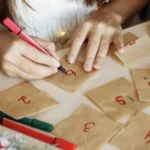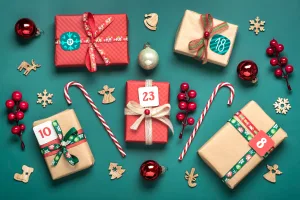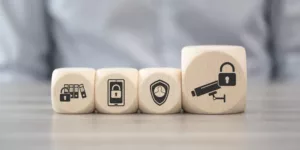Who hasn’t thrown a Wheel of Fortune in the hope of being the lucky winner? It’s one of the most famous game mechanics in the world, and for good reason: the rules are simple and participants know instantly whether they’ve won or not.
The Wheel of Fortune is therefore a powerful lever for capturing the attention of your audience, animating your brand community and generating more sales. In this comprehensive guide, Socialshaker shares a tutorial and practical advice on how to get the most out of this marketing game!
Why make a Wheel of Fortune?
The Wheel of Fortune is a fun and engaging mechanism. It enables brands to attract the attention of shoppers, energise their customer relations and encourage strategic actions such as purchasing or loyalty building. Here’s why you should adopt it, depending on your bradn’s objectives.
1) Animate your community
A Wheel of Fortune creates an interactive experience that engages the brand’s community and generates traffic on its commercial platforms, both digital and physical. For example, an amusement park can create an online Wheel of Fortune where its audience can try to win free tickets, fast passes or free drinks/meals. It’s a way of engaging potential visitors and encouraging them to visit the park!
2) Boost conversion
Integrated onto a e-commerce site, the Wheel of Fortune encourages visitors to make a purchase by offering them exclusive discounts or gifts. For example, an online shop can create a Wheel of Fortune each time a user adds an item to their shopping basket, giving them to chance to win an immediate discount on their purchase (-5%, -10% or even free delivery), in exchange for their email address. The marketing games fulfils two objectives here: improving the conversion rate and enriching the customer database.
3) Boost your loyalty program
Shared post-purchase (on the e-commerce site or the brand’s application, but also in-store via a QR code printed on the till receipt), the Wheel of Fortune rewards loyal customers. It is also highly effective in stimulating repeat purchases and increasing customer lifetime value (TLV).
For example, a cosmetics company might offer customers who have placed an order access to a Wheel of Fortune, where they can win bonus loyalty points, a free sample or a discount on their next purchase. In this way, the marketing game can encourage long-term retention and commitment.
How to create a Wheel of Fortune
Creating an interactive Wheel of Fortune is an excellent way of engaging your audience and boosting your future marketing campaigns. Here’s a detailed tutorial on how to set up this mechanism using the Socialshaker platform.
Step 1: Prepare the wheel design
Before starting, it is essential to prepare the necessary graphic elements, for the background of the campaign, the form page, but also and above all for the image of the wheel. Retailers can choose from the templates provided or import their own design for a more immersive campaign that will immerse participants in the world of the brand.
Step 2: Configuring your marketing game campaign
The advertiser can then start to configure their campaign, including :
- General parameters: by entering basic information such as the name of the campaign, start and end dates, and participation conditions.
- The entry form (crucial for collecting customer data and enriching your database): by defining the fields that participants must fill in (name, email, etc.);
- Wheel parameters: by specifying the number of sections on the wheel and assigning each one a particular endowment or message.
Stage 3: Managing endowments
Wheel of Fortune works on a prize system. Brands must therefore set the prizes that participants can win:
- Creating the prizes: add the various prizes that the brand wishes to offer, specifying the quantities available and the probability of winning.
- Instant Win configuration: define the precise moments when prizes can be won.
Stage 4: Finalising and distributing the marketing game
All that’s left for the advertiser to do is to use the preview function to make sure that their Wheel of Fortune is working properly and that the design meets their expectations. They can then activate the campaign and distribute it to their audience, using the most appropriate communication channels according to the marketing objectives they have set themselves.
- On social networks to boost branding and brand awareness;
- In-store (using interactive terminals or QR codes) to promote physical points of sale;
- On your e-commerce site or application to generate sales and increase your conversion rate
- Via its loyalty programme to optimise its retention rate.
3 tips for a successful marketing game
To maximise the impact of your Wheel of Fortune, here are three essential tips to put into practice, inspired by successful marketing campaigns.
1) Customise the design to reflect your brand universe or marketing highlight
Why personalise your marketing game? A unique design that is consistent with the brand’s universe attracts attention and strengthens the company’s reputation (making it easier to recognise).
How can you customise an online Wheel of Fortune? By integrating your brand colours, logo or specific graphic elements (particularly at peak marketing times). It’s also important to use a responsive design to ensure a smooth experience on both mobile and desktop devices.
Example: The Wheel of Fortune shared by Cirque d’Hiver Bouglione immersed participants in the circus world of the advertiser while using codes that were easily identifiable by the audience (smileys).
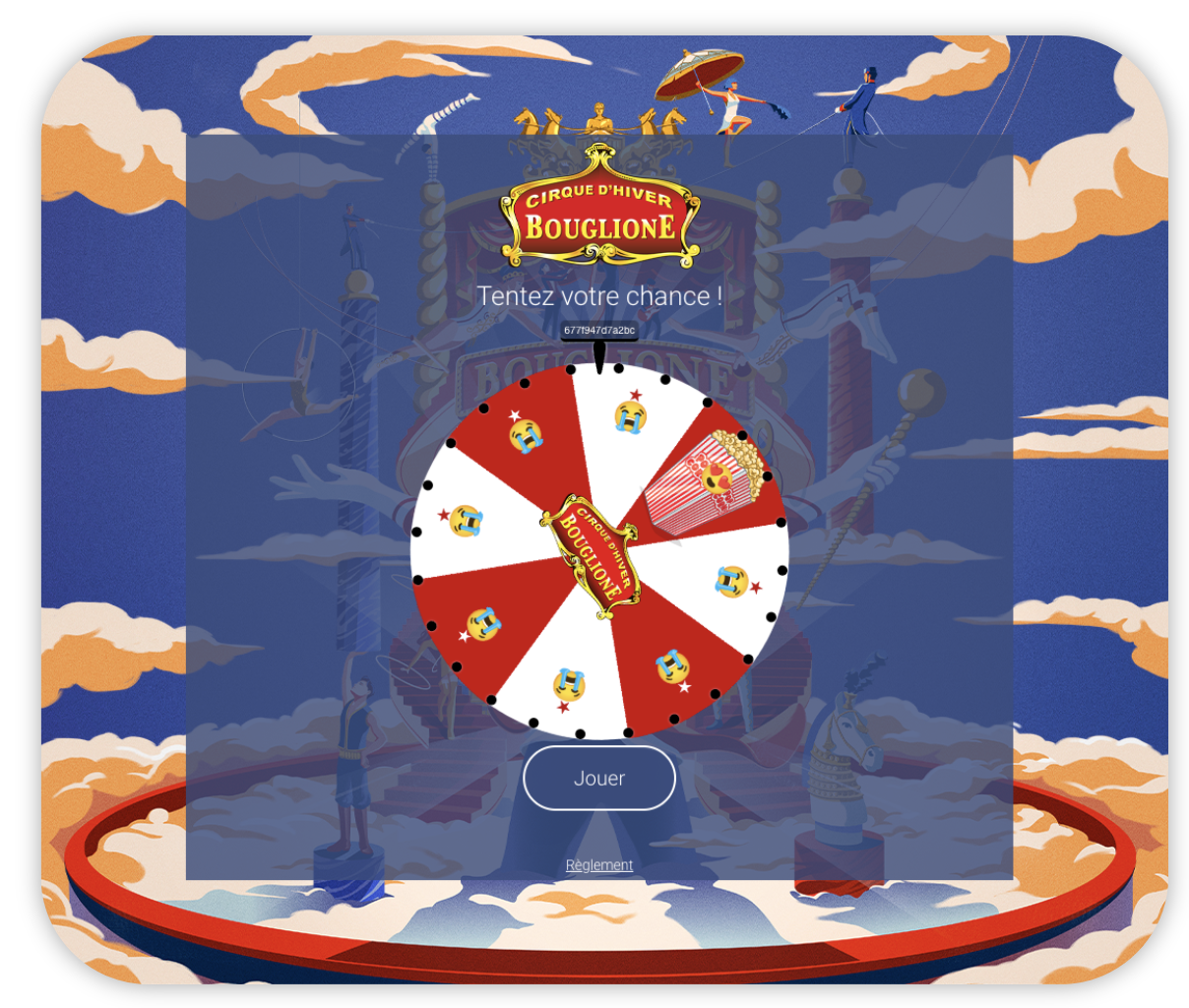
2) Choose attractive prizes to maximise participation
Why choose attractive prizes for your marketing game?
The more desirable the lots, the greater the commitment and the greater the sahring.
How to choose which prizes to win of Wheel of Fortune?
Retailers should offer gifts linked to their bradn universe (products, vouchers, exclusive access). It is also adivisable to mix accessibl rewards (e.g. promo codes) with premium prizes (to be won at a later date, after qualifying for a prize draw) to maintain interest.
Example: For the TER Fluo days, the SNCF offered its community the chance to win a “Golden Ticket” entitling the holder to a year’s free TER travel!
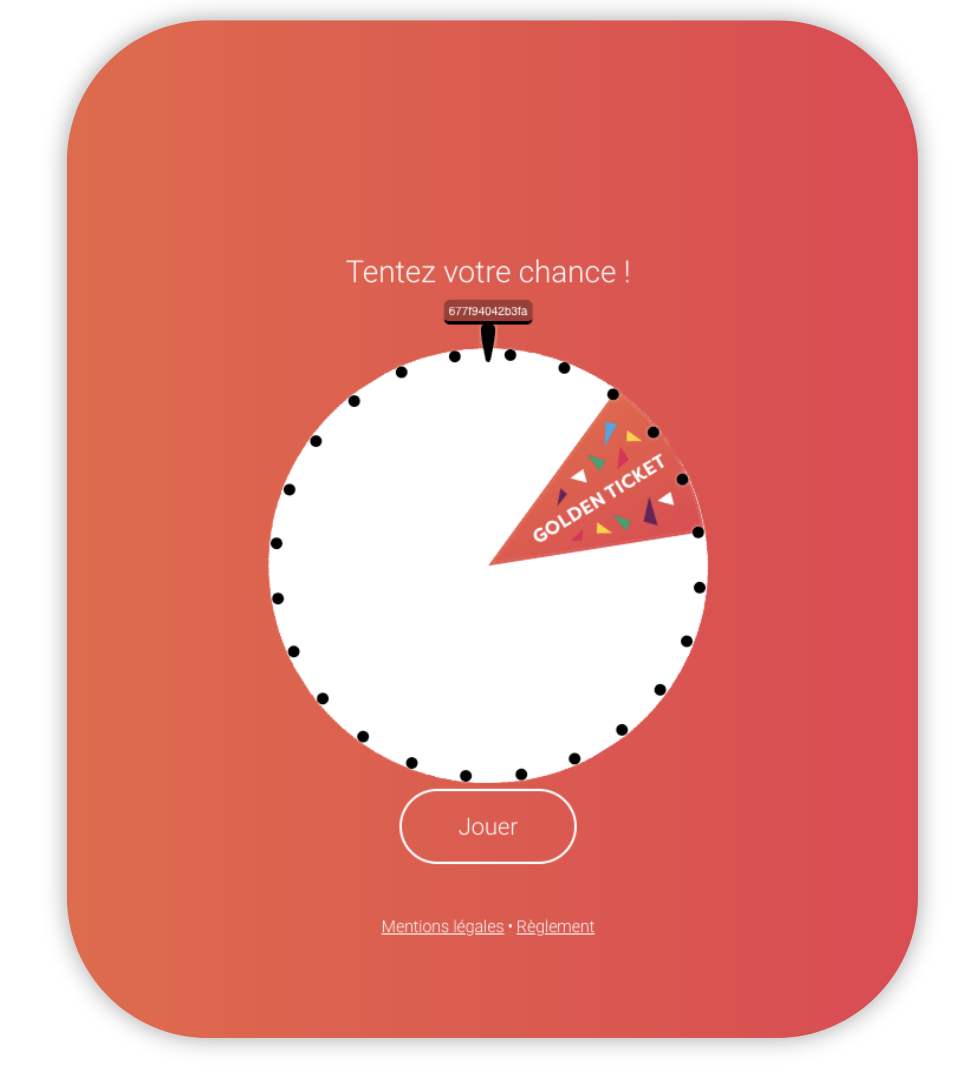
3) Use the appeal of the game to collect customer data
Why collect data with a Wheel of Fortune?
Thanks to its viral and highly attractive format, the Wheel of Fortune is an excellent way of enriching your database and generating qualified leads.
How to collect data using a Wheel of Fortune?
By adding a participation form to capture marketing emails and opt-ins. Be careful, however, to include a clear RGPD consent form so that data collection complies with the laws in force.
Example: The Cirque d’Hiver Bouglione reserved its largest prize (a private visit) for participants who entered the prize drax by sharing their contact details.
So Wheel of Fortune is the ideal marketing for animating your community of prospects and customers, and boosting your conversion and loyalty rates! With Socialshaker, you can easily create and personalise your campaign, based on your objectives and your brand universe!


